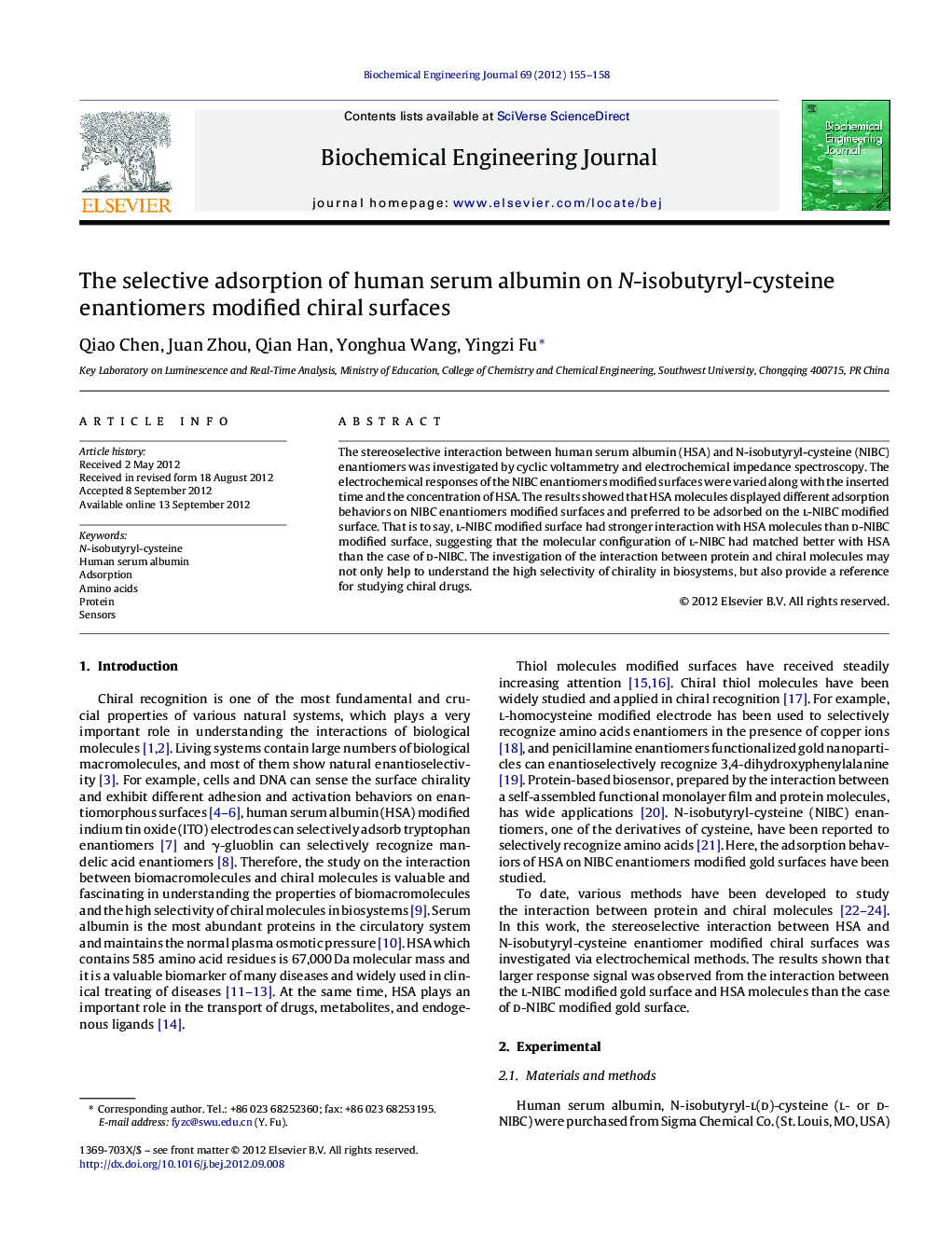| Article ID | Journal | Published Year | Pages | File Type |
|---|---|---|---|---|
| 3549 | Biochemical Engineering Journal | 2012 | 4 Pages |
The stereoselective interaction between human serum albumin (HSA) and N-isobutyryl-cysteine (NIBC) enantiomers was investigated by cyclic voltammetry and electrochemical impedance spectroscopy. The electrochemical responses of the NIBC enantiomers modified surfaces were varied along with the inserted time and the concentration of HSA. The results showed that HSA molecules displayed different adsorption behaviors on NIBC enantiomers modified surfaces and preferred to be adsorbed on the l-NIBC modified surface. That is to say, l-NIBC modified surface had stronger interaction with HSA molecules than d-NIBC modified surface, suggesting that the molecular configuration of l-NIBC had matched better with HSA than the case of d-NIBC. The investigation of the interaction between protein and chiral molecules may not only help to understand the high selectivity of chirality in biosystems, but also provide a reference for studying chiral drugs.
Graphical abstractThe schematic representation of l-NIBC-Au (a) and d-NIBC-Au (b) interact with HSA. The molecular configuration of l-NIBC had matched better with HSA than the case of d-NIBC.Figure optionsDownload full-size imageDownload as PowerPoint slideHighlights► Electrochemical methods were used to investigate the enantioselective interaction. ► HSA showed different behaviors on N-isobutyryl-cysteine enantiomers chiral surfaces. ► Larger electrochemical response signals were observed after HSA adsorbed on N-isobutyryl-l-cysteine-Au than N-isobutyryl-d-cysteine-Au. ► This work provides a reference for studying chiral drugs.
